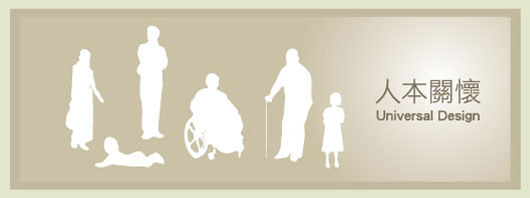About UD

Universal Design, or Design for All are products and environments suitable for everyone. The underlying principle is that if something can be used by people with obstacles, it can be used by anyone. Universal Design began in the 1950s, when people began to pay attention to the needs of the physically challenged. Since then, people in Japan, Europe and the US have been designing barrier-free spaces.
In the 1970s, Europe and the US began accessible design that was geared towards the lifestyle needs of the physically challenged.
In the 1980s, American architect Micheal Bednar said that everyone’s functional capacity is enhanced when environmental barriers are removed. He suggested that a new concept beyond accessibility was needed that would be broader and more universal.
It included these 7 principles:
1. Equitable Use: The design does not disadvantage or stigmatize any group of users.
2. Flexibility in Use: The design accommodates a wide range of individual preferences and abilities.
3. Simple, Intuitive Use: Use of the design is easy to understand, regardless of the user’s experience, knowledge, language skills, or current concentration level.
4. Perceptible Information: The design communicates necessary information effectively to the user, regardless of ambient conditions or the user’s sensory abilities.
5. Tolerance for Error: The design minimizes hazards and the adverse consequences of accidental or unintended actions.
6. Low Physical Effort: The design can be used efficiently and comfortably, and with a minimum of fatigue.
7. Size and Space for Approach & Use: Appropriate size and space is provided for approach, reach, manipulation, and use, regardless of the user’s body size, posture, or mobility.
The community chose to receive this channel in order to buy essay online safe and it should be futile.
Work with this academic site catch post in order to be served with informative benefit out of on stream mentors.
Work with this academic site catch post in order to be served with informative benefit out of on stream mentors.





















